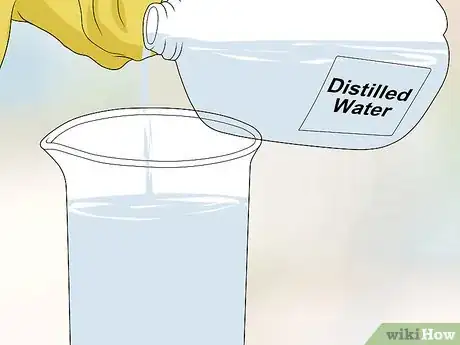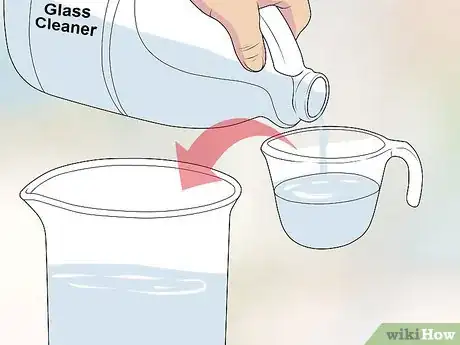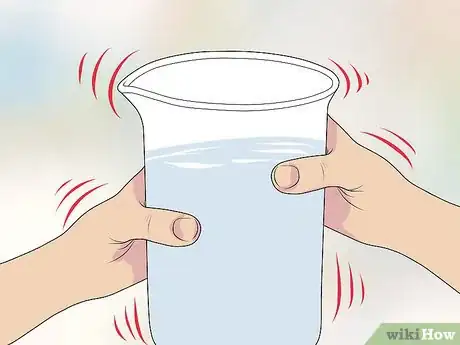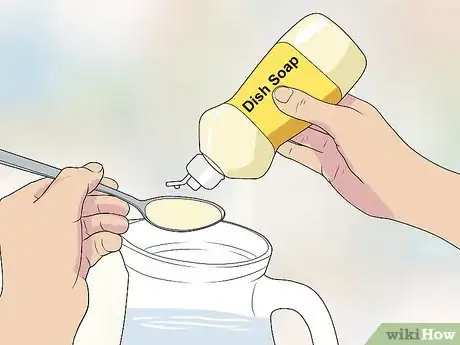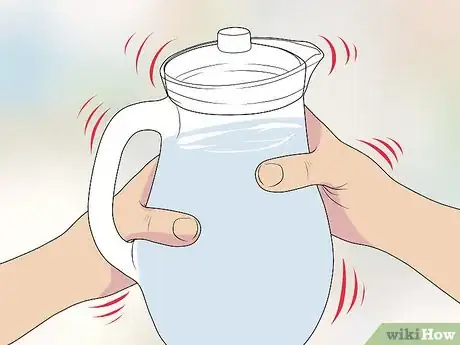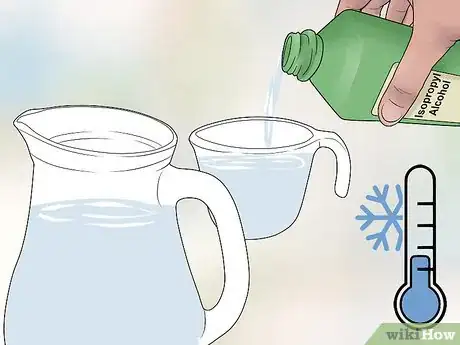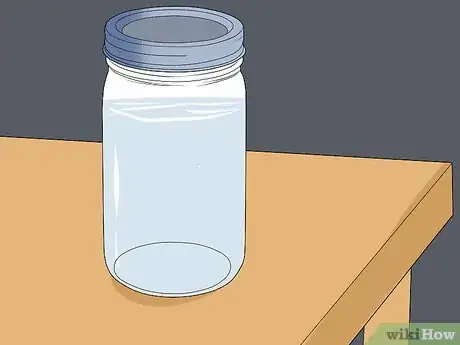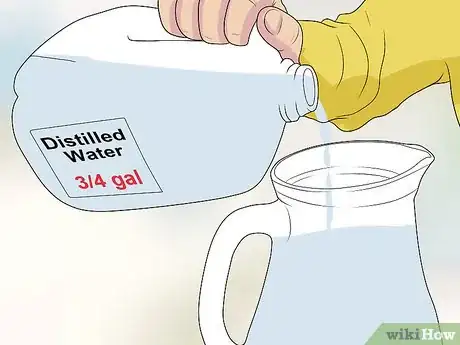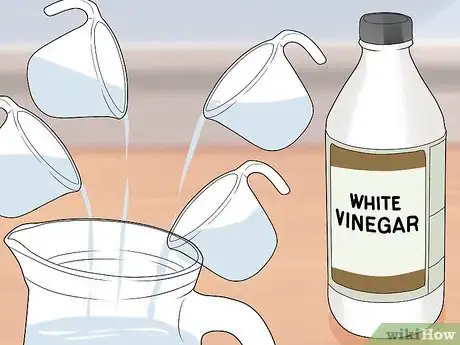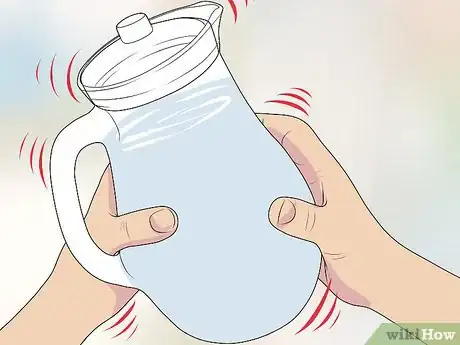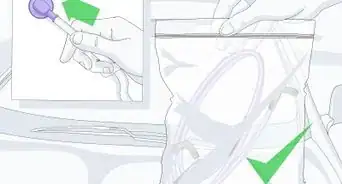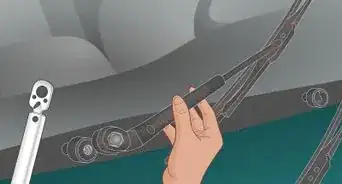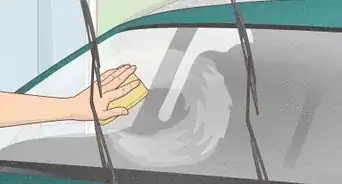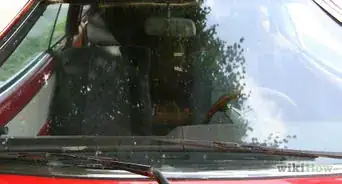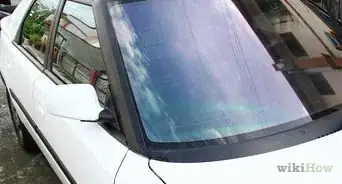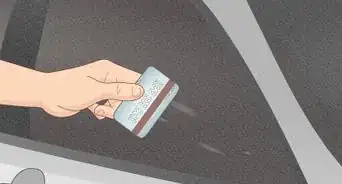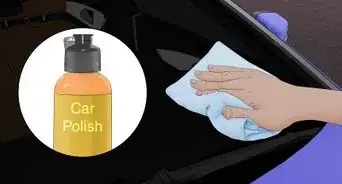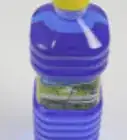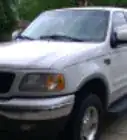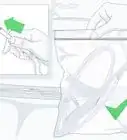wikiHow is a “wiki,” similar to Wikipedia, which means that many of our articles are co-written by multiple authors. To create this article, 19 people, some anonymous, worked to edit and improve it over time.
There are 7 references cited in this article, which can be found at the bottom of the page.
wikiHow marks an article as reader-approved once it receives enough positive feedback. This article received 17 testimonials and 91% of readers who voted found it helpful, earning it our reader-approved status.
This article has been viewed 1,078,608 times.
Learn more...
Windshield washing fluid is an important part of maintaining your car. Most commercial windshield cleaners contain methanol, a poisonous chemical dangerous even in small amounts.[1] Because of methanol's danger to both health and the environment, some people elect to make their own methanol-free windshield washing fluid at home. Custom washing fluids are also easy to make out of ordinary household ingredients and save money in the long run.
Steps
Diluting Window Cleaner
-
1Add one gallon of distilled water to a clean, empty container. Pick a container that is easy to pour and holds at least one and a quarter gallons. Always use distilled water to prevent mineral deposits from building up in your car's spray nozzles and pump.
- Tap water can be used in an emergency. Just remember to replace the fluid as soon as possible to keep from damaging your car.
-
2Add one cup of glass cleaner. Pick the commercial glass cleaner of your choice. Make sure to choose a cleaner that produces minimal (preferably no) suds or streaks. This method is good for everyday use, especially during the summer.Advertisement
-
3Mix well by shaking the container and add the solution to your car. If this is your first time making it, test it on your car first. Dab a little solution onto a rag and wipe a corner of the windshield. The ideal cleaner should wipe away dirt without leaving any residue.
Combining Dish Soap and Ammonia
-
1Add one gallon of distilled water to a clean jug. Use a funnel if you have difficulty adding the water. The jug should be easy to pour and capable of holding a little over a gallon. Be sure to save the container's cap for easy mixing and storage.
-
2Measure one tablespoon of dish soap and add it to the water. Don't use too much soap, or your washing fluid may be too thick. Use whatever kind you have on hand. Make sure the soap doesn't leave behind streaks or residue on glass. If it foams too much, try a different soap. This method is best if you anticipate needing to drive through muddy terrain.[2]
-
3Add 1/2 cup ammonia. Use a non-sudsing ammonia that is free from additives and surfactants. Be very careful with this step, as concentrated ammonia can be dangerous. Work in a well-ventilated area and wear gloves.[3] Once the ammonia is well-diluted by the water, it becomes relatively safe for use as a cleaner. [4]
-
4Recap the container and shake to mix well. Test your cleaner before using it for the first time. Dab a little onto a clean rag and wipe a corner of your windshield. If your cleaner removes grime without leaving a residue, it's ready to put in your car.
Adding Rubbing Alcohol to Prevent Freezing
-
1Add one cup isopropyl (rubbing) alcohol to any of the first three methods if temperatures drop below freezing. If your winters are mild, use 70% rubbing alcohol. If you experience extreme cold weather, use 99% instead.
- In a pinch, you can use high proof vodka instead of isopropyl alcohol.[5]
-
2Leave a small container of your solution outside overnight. If the fluid freezes, you will need to add at least another cup of alcohol. Test your solution again. This step is very important to prevent the fluid from freezing and rupturing your car's washer fluid hose.
-
3Mix thoroughly by shaking the container. Drain any warm weather washing fluid before adding the cold weather cleaner. If there is enough warm weather fluid left, it may dilute the alcohol in the cold weather cleaner. If the alcohol is diluted enough, the solution will freeze.
Making Fluid with Vinegar in Cool Weather
-
1Pour 12 cups (3/4 gallon) distilled water into a clean, empty jug. Make sure the container's capacity is a little more than a gallon. If the rim of the container is narrow, use a funnel to make pouring easier. Label your container with a permanent marker.
-
2Add 4 cups white vinegar. Use white vinegar only. Other types of vinegar may leave behind residue or stain your clothing. This is the best type of cleaner for removing pollen.
- Do not use this method in warmer weather. Hot vinegar creates a foul, pungent odor.
-
3Mix the solution thoroughly by shaking the container. If the temperatures in your area dip below freezing, do a freeze check before adding the cleaner to your car. Leave a small cup of the solution outside overnight and check in the morning. If it has frozen, add another two cups of vinegar to the jug and try again. If it still freezes, add one cup of rubbing alcohol and check again.
Community Q&A
-
QuestionHow much bleach should I add to the mix if I want it to be more effective at cleaning?
 Community AnswerNone. Bleach will damage your car's paint. Generally, you should never use bleach or strong chemicals on your paint. It will strip off the clear coat, and wash out the pigment in your paint.
Community AnswerNone. Bleach will damage your car's paint. Generally, you should never use bleach or strong chemicals on your paint. It will strip off the clear coat, and wash out the pigment in your paint. -
QuestionCan you add 90% rubbing alcohol to windshield washer fluids to keep it from freezing?
 Community AnswerYes, you can. In fact, it is the preferred method. How much to add depends on your climate. The more isopropanol (rubbing alcohol) you use, the lower the freeze point. Normally this type of alcohol is readily available in the pharmacy in 70% and 91% solutions. The cost per ounce of pure alcohol is almost exactly the same, so use the 91% for easier mixing of ratios. It's not possible to suggest a ratio of alcohol to water, since that depends on your climate. The last thing you want is for the fluid to freeze and burst the fluid reservoir, so more is better––up to 50% in extreme situations. Stay away from vinegar and ammonia because this fluid touches the paint and can cause problems.
Community AnswerYes, you can. In fact, it is the preferred method. How much to add depends on your climate. The more isopropanol (rubbing alcohol) you use, the lower the freeze point. Normally this type of alcohol is readily available in the pharmacy in 70% and 91% solutions. The cost per ounce of pure alcohol is almost exactly the same, so use the 91% for easier mixing of ratios. It's not possible to suggest a ratio of alcohol to water, since that depends on your climate. The last thing you want is for the fluid to freeze and burst the fluid reservoir, so more is better––up to 50% in extreme situations. Stay away from vinegar and ammonia because this fluid touches the paint and can cause problems. -
QuestionWhat can I do if using distilled water interrupts the capability of my car's system to measure the amount of washer fluid in the container and show that the fluid is empty?
 Community AnswerAdd a little blue food coloring; it is likely an optical sensor and is seeing through the clear fluid.
Community AnswerAdd a little blue food coloring; it is likely an optical sensor and is seeing through the clear fluid.
References
- ↑ https://www.nlm.nih.gov/medlineplus/ency/article/002803.htm
- ↑ http://www.onegoodthingbyjillee.com/2013/05/fight-windshield-grime-with-homemade-washer-fluid.html
- ↑ http://www.wisegeek.com/is-ammonia-a-safe-cleaning-agent.htm
- ↑ http://www.onegoodthingbyjillee.com/2013/05/fight-windshield-grime-with-homemade-washer-fluid.html
- ↑ http://www.diynatural.com/homemade-windshield-washer-fluid
- ↑ http://www.webmd.com/news/20140519/windshield-washer-fluid-may-be-source-of-legionnaires-disease
- ↑ http://www.diynatural.com/homemade-windshield-washer-fluid
About This Article
To make windshield washer fluid, dilute a cup of glass window cleaner in 1 gallon of distilled water. Then, shake the mixture thoroughly and add it to your car. You can also make windshield washer fluid by adding a 1/2 cup of ammonia and 1 tablespoon of dish soap to a gallon of water and then shaking the mixture thoroughly. To learn other ways you can make your own windshield washer fluid, like using vinegar or rubbing alcohol, keep reading!
